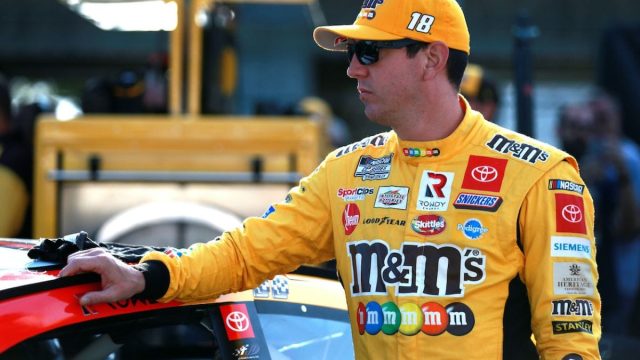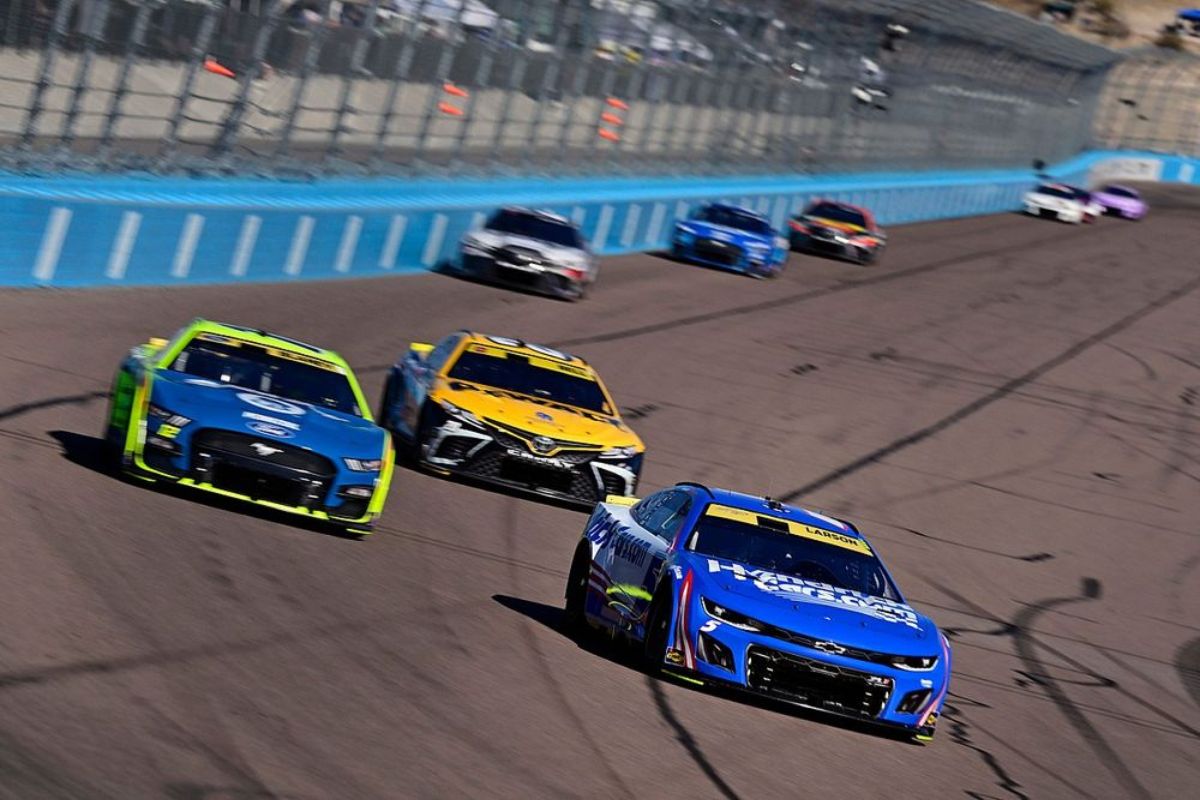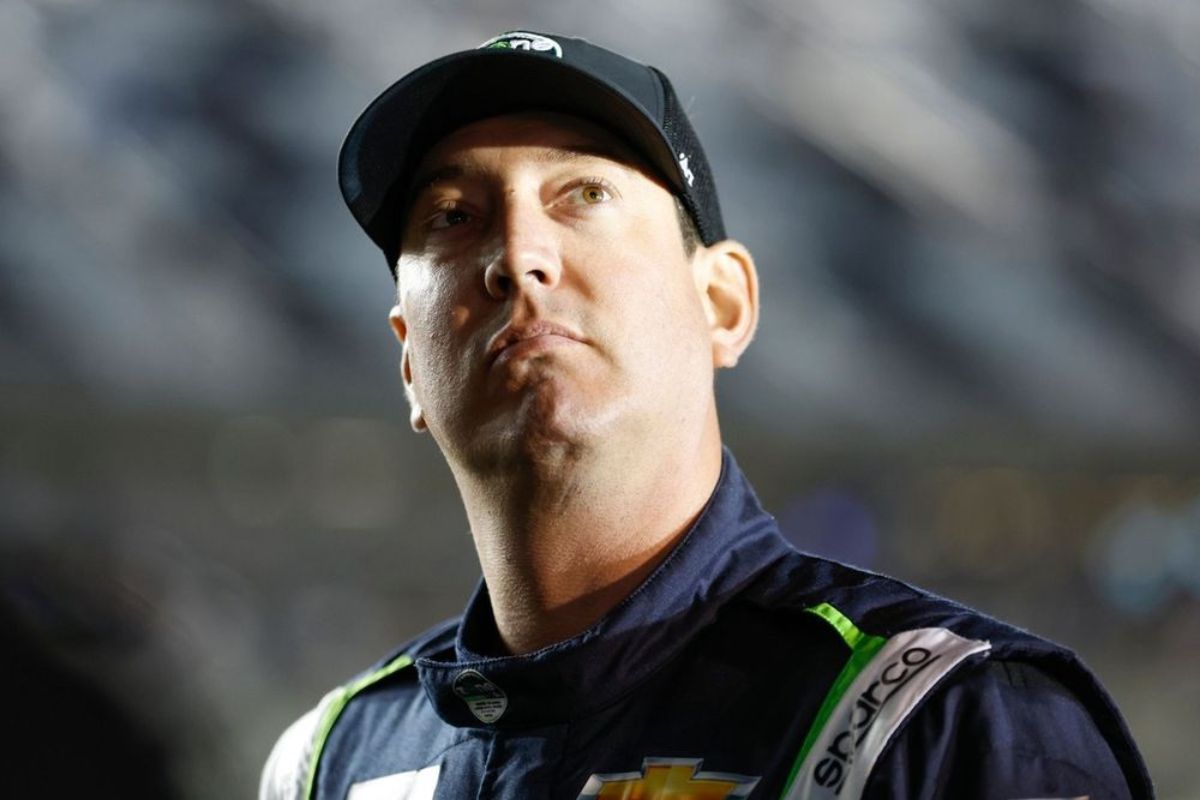Kyle Busch Unveils 3-Year Safety Neglect by NASCAR: Kyle Busch‘s recent criticism of NASCAR’s neglect regarding critical safety measures has ignited a notable debate within the racing community. His urgent call for the implementation of air deflectors, particularly as the Daytona race approaches, raises questions about the organization’s commitment to driver safety versus competitive integrity. This tension highlights Busch’s personal struggles on the track and broader implications for NASCAR’s safety protocols. As the stakes escalate, the potential for reform looms large, prompting an examination of how the sport can balance performance and protection amidst mounting pressure.
Key Highlights
- Kyle Busch criticized NASCAR for not addressing driver safety concerns, particularly after recent accidents and his advocacy for air deflectors.
- The Daytona race is pivotal for Busch as he fights to secure a playoff spot amidst ongoing performance struggles and mechanical issues.
- Busch emphasized the importance of vehicle integrity and strategic risk management at Daytona, given the high potential for accidents in superspeedway racing.
- NASCAR’s current safety measures are under scrutiny, with calls for immediate action in response to driver feedback and safety advocacy.
- Busch’s vocal stance on safety may encourage other drivers to express their concerns, potentially leading to reforms in NASCAR’s safety protocols.
NASCAR’s Response to Safety Issues
NASCAR’s recent adjustments to the safety features of the Next Gen car underline a growing concern among drivers regarding the vehicle’s design and performance. The modifications were catalyzed by the alarming incident involving Corey LaJoie’s harrowing flip at Michigan International Speedway, which showed the potential dangers associated with the car’s current configuration.
In response, NASCAR mandated the installation of an air deflector on the right-side rear of the race car, a decision that raises questions about the foresight and preparedness of the governing body to address safety issues proactively.
The introduction of the air deflector highlights the inherent tension between innovation and safety in NASCAR’s design philosophy. The Next Gen car was intended to improve parity and competition; however, it has faced criticism for its aero-heavy design, which has inadvertently contributed to a lack of overtaking opportunities.
This design flaw, coupled with the recent safety concerns, stresses the need for a thorough reevaluation of the car’s architecture.
It is important to recognize that the air deflector is not a novel invention but a feature that NASCAR previously opted against implementing. This raises significant questions regarding the decision-making processes within the organization and their implications for driver safety.
Consequently, the recent actions taken by NASCAR serve as a vital step in addressing these pressing safety issues, albeit belatedly.
Kyle Busch’s Advocacy for Air Deflectors
The recent modifications to the Next Gen car’s safety features have reignited discussions surrounding the need for improved protective measures on the track, particularly in the context of Kyle Busch’s advocacy for the implementation of air deflectors.
These devices, designed to stabilize the vehicle during high-speed maneuvers, have become a focal point of contention as Busch highlights the critical role they play in preventing dangerous flips and airborne incidents.
Busch’s insistence on the necessity of right-side fins during every Cup Series race is rooted in his observations from the vehicle’s testing phases. He recalls the efficacy of double sharp fins on the rear windows and deck lids, which he claims markedly improved stability in cornering.
This direct experience emphasizes his belief that further air deflectors could serve not only to safeguard drivers but also to bolster the comprehensive racing spectacle by maintaining competitive integrity.
Despite Busch’s repeated appeals to NASCAR for the incorporation of these safety features, the governing body has not taken decisive action. His assertion that the existing design lacks sufficient fortification against the forces encountered during racing conditions raises pertinent questions about NASCAR’s commitment to driver safety.
“We ran it once we were first testing the new Next Gen car at Charlotte, and we did that when we were all out there. Double sharp fins on the rear windows and the rest of the deck lids and it seemed to stabilize the car in the corners more.” – Busch
As Busch noted, “If this is a tool to help these cars when they turn sideways at high speeds stay on the ground, I’m all for it.”
“I’ve actually suggested that and vouched for that back in the beginning of time with this car and never heard anything more. So if this is a tool to help these cars when they turn sideways at high speeds stay on the ground, I’m all for it, and I also think it could be of benefit to regular show as well each week.” – Busch
Kyle Busch said they tested a right-side fin (air deflector) once at Charlotte and he felt it stabilized the cars more in the corner, adding more side force. So he is in favor of the addition of it starting this weekend. pic.twitter.com/o6qyqjSrwT
— Bob Pockrass (@bobpockrass) August 23, 2024
The urgency of his advocacy reflects an industry-wide imperative to reassess safety protocols considering evolving vehicle dynamics and the high-stakes environment of NASCAR racing.
Kyle Busch’s Current Struggles
Amid the evolving landscape of NASCAR, Kyle Busch finds himself grappling with an unprecedented challenge as he navigates his longest winless streak in the Cup Series. This current season has been particularly tumultuous for the two-time champion, who, despite his storied past, is now 93 points shy of the playoff cutline. With only two regular-season races remaining, the urgency to reverse his fortunes is palpable.
Busch’s struggles can be attributed to a confluence of factors, including mechanical issues, tactical missteps, and heightened competition within the NASCAR circuit. The shift to Richard Childress Racing (RCR) has introduced supplementary dynamics, as Busch seeks to align himself with a new team culture and technological framework.
The pressure to perform not only weighs heavily on Busch but also on the No. 8 team, which is tasked with delivering results that have so far eluded them.
Historically, Busch has been a perennial contender, never missing the playoffs since 2012. However, the current scenario presents a pronounced contrast to that pattern, raising questions about his adaptability and resilience in this high-stakes environment.
The upcoming races are not merely a formality; they represent a critical juncture where Busch must capitalize on every opportunity to avoid an unprecedented absence from the playoffs. The intersection of his individual performance and team dynamics will ultimately determine whether Busch can reclaim his status as a championship contender or become a casualty of a difficult season.
Kyle Busch’s Perspective on His Situation
Frequently reflecting on his current predicament, Kyle Busch acknowledges the gravity of his situation with a sense of realism that speaks to his experience as a seasoned competitor. He candidly admits to the unexpected nature of his struggles, stating, “I’ve been down before, although probably never as low as this has been.” This acknowledgment exemplifies not only his vulnerability but also a profound understanding of the cyclical nature of competition.
Busch’s perspective is further enriched by the support he has received from his team. He highlights the fellowship within the 8 team, noting, “Everybody on the 8 team has really put their arm around me and patted me on the back,” which emphasizes the importance of collective resilience in high-stakes environments.
This supportive atmosphere serves as a vital buffer against the pressures of performance, enabling him to focus on improvement rather than dwelling on setbacks.
Moreover, Busch articulates a clear recognition that current struggles are not indicative of a lack of effort. “We know we’re not doing the best right now, so we’re all trying to work hard to get better,” he remarks, highlighting a commitment to growth and adaptation.
“Everybody on the 8 team has really put their arm around me and patted me on the back, like ‘We got you man.’ We know we’re not doing the best right now, so we’re all trying to strive to get better and put ourselves in the spots that we all want to be in. It’s not due to a lack of effort. I know that.” – Busch
Upcoming Challenge at Daytona
This weekend’s Daytona race presents a crucial juncture for Kyle Busch, as it may represent his final opportunity to secure a playoff spot in the current NASCAR season. The stakes are exceptionally high, given the competitive landscape and the intensity of the pressure that accompanies the iconic Daytona International Speedway.
For Busch, the race is not merely about points; it is a convergence of tactical racing, skillful execution, and the inherent unpredictability of a superspeedway environment. Busch’s approach to this race will require meticulous planning and an acute awareness of both his vehicle’s performance and the dynamics of his competitors.
The drafting strategies, pit stop timing, and risk management will play pivotal roles in determining his success. Additionally, Busch must navigate the balance between aggression—essential for overtaking—and caution, particularly in view of recent safety concerns that he has vocally addressed.
The potential for accidents at Daytona is considerable, and Busch’s previous experiences have highlighted the importance of maintaining vehicle integrity throughout the race. Complicating matters is the psychological element of racing under pressure, particularly when the possibility of elimination looms large.
Busch’s mental fortitude will be tested as he balances the need for speed with the imperative of safety, both for himself and his fellow competitors. As the race unfolds, all eyes will be on Busch, not only to see if he can secure that coveted playoff spot but also to gauge how his advocacy for safety continues to influence the sport.
News in Brief: Kyle Busch Unveils 3-Year Safety Neglect by NASCAR
The ongoing dialogue surrounding driver safety in NASCAR, particularly highlighted by Kyle Busch’s recent criticisms, underscores the urgent need for improved protective measures. Busch’s advocacy for air deflectors reflects a broader concern regarding vehicle vulnerabilities, especially ahead of high-stakes races like Daytona. As the series navigates the tension between competitive performance and safety, the potential for notable reforms emerges, which could fundamentally alter NASCAR’s commitment to safeguarding its drivers in the future.
ALSO READ: Kyle Busch Moves Chase Briscoe Out of the Way: Final Push for Playoff Glory Begins



